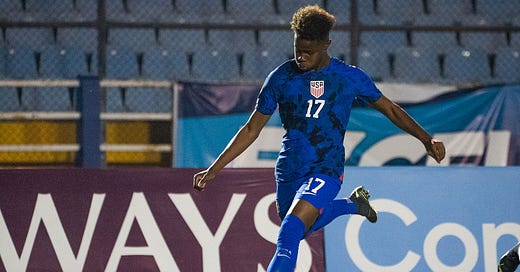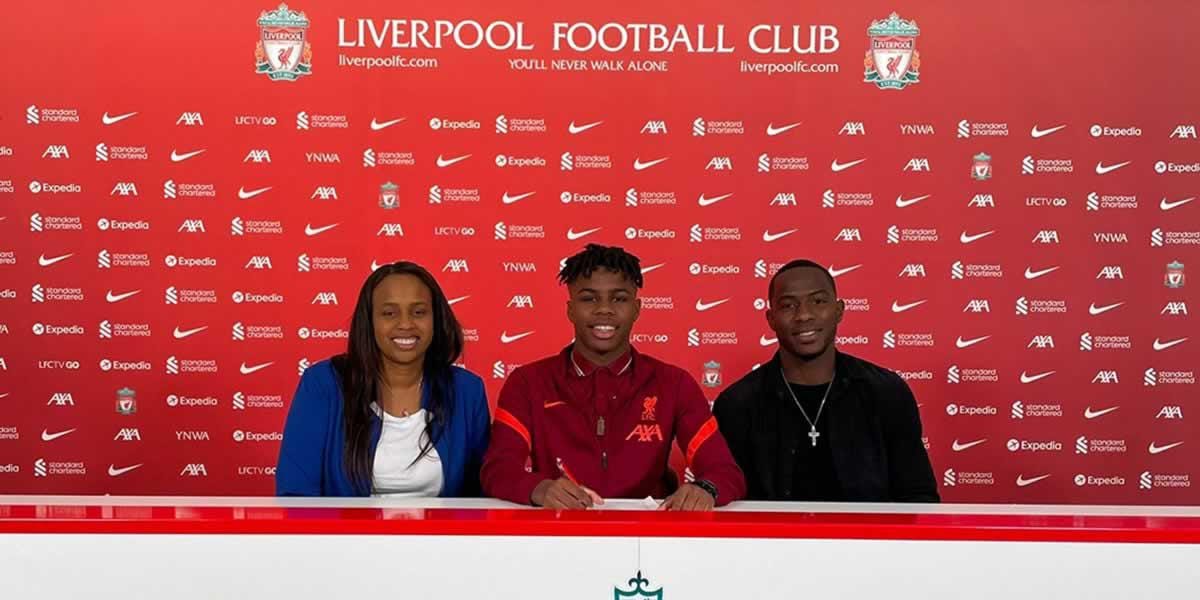The Curious Case of Keyrol Figueroa
A deeper look at Concacaf dual-nationals and the difficult decisions they face
This was a piece I had been developing and planned to release later, but given the focus on dual-nationals at this Gold Cup and a recent conversation with blind spots during the Fox broadcast of the recent USMNT game, I wanted to weigh in here with a few thoughts. I would love to hear yours as well in the comments.
We live in a world where increasing globalization touches every part of our lives, including soccer. Players from all over the world compete in leagues of other countries, we can watch games from across the world in real time, and players/teams can build global brands like never before. There has also been a rise in players being eligible to play for multiple countries and many represent more than one country during their careers. This may occur through a player having parents from two different countries (as will be the case with my future children), residing in a country that was not their birthplace, or becoming a naturalized citizen, just to name a few.
Today, it’s harder to define what “my country” is for people, and that includes football players. This struggle can be explained in the expression “ni de aquí, ni de allá” which translates as “neither from here, nor there”. Although I have not experienced this myself, I have spoken at length about this with my wife and many friends. Often times, people that have immigrated to another country, or whose parents immigrated and grew up in a multicultural household, carry the weight of not feeling fully part of, or integrated in, a particular country or culture. This feeling is heightened by a society that tries to put people into boxes and make everything either/or and black/white versus acknowledging the nuanced reality of how deeply personal this is. Former USMNT player Herculez Gomez speaks on this often. This is what I feel the presenters of the Fox pregame show failed to understand.
This brings me to the title of this post, Keyrol Figueroa. Most of you reading this post likely won’t know who he is, unless you follow Honduran football or the USA U17 team. He is the son of Maynor Figueroa, a former premier league defender and a legend for the Honduran national team (181 caps, team captain from 2014-2022). Keyrol is 16 years old and currently playing in the Liverpool FC Academy (where he famously scored 90 goals in a youth season)! There were thoughts that he could receive a call up to the Honduran senior team in 2022, but shortly after, the Central American nation was shocked when he appeared in a game for the USA U17 team in September 2022 and again for them in the 2023 Concacaf U17 Championships where he netted 7 goals and helped lead them to the finals.
There was a mix of reactions back in Honduras. Many were disappointed that he decided to play for the USA rather than his birth country (where his father is a legend). Others were supportive of him and think he will have a brighter future wearing the Stars and Stripes rather than La H. Some were downright upset with the decision. There was enough anger being directed Keyrol’s way that his mother Sandra Norales, a former professional athlete herself, published a letter defending her son and their family. She essentially explains that if people have questions of why he isn’t playing for La H, they should ask the federation because they had been preparing for him to be there. She also explains that seeking the best for their son does not make them traitors to their country. This just highlights the tremendous weight that is on the shoulders of dual-nationals and their families.
To be clear, just because Keyrol has played in the youth ranks the US doesn’t mean he cannot choose to represent Honduras in the future (he could even represent the USMNT at the senior level in some capacity and still make the one time switch [see FIFA eligibility rules] but at this point it is hard to imagine a rising star at the Liverpool Academy who is being recruited by the next World Cup host being swayed. In an interview with US Soccer, you can see the decisions that Keyrol has had the navigate as a young teenager. Figueroa states the following:
“I say I’m from Honduras, that’s where I was born”
“When I got called up, I called my mom straight away…I was just really happy”
“I was questioning which team I was going to represent, but what made me pick US was the fact that all my family are spread across the US and I think every person represents me…so I thought US was the perfect choice”
“I want to represent them and make them proud…I want to make everyone proud…because it’s not just my dream, it just grew into everybody’s dream”
As a fan of the USMNT I was initially very excited! I have long said that the federation doesn’t do a good enough job developing young dual national players from Latin America and bringing them into the program. Shortly after, my excitement faded. As a fan of Honduras, the country of my wife and where I have spent significant time, I was somewhat disappointed and sad that he may not be part of the next generation of stars to represent Los Catrachos. I was torn and I couldn’t seem to figure out where I landed.
One of the beautiful things about the United States of America is it’s diversity. The rich cultural backgrounds of those that have immigrated over generations make our country better. From a footballing perspective, this diversity allows for a massive player pool to be eligible to play for the USMNT. One of my initial feelings of discomfort around Keyrol being recruited by the US was due to the precedent it could set. I could see the US finding the best talent across Central America & Caribbean that are eligible to represent USMNT and recruiting those young players into the program (a strategy I initially pushed for). While this helps the US, it could potentially hurt the long term growth of other CONCACAF nations that have much smaller player pools.
Thankfully there are a few trends that will likely not allow for the total domination of the regional player pool by the US. The first are the new FIFA eligibility rules referenced earlier. These now allow for a player to more easily make a switch to a different country even after appearing in the youth ranks, and even senior ranks, for one country. This would mean if a player born in Panama was eligible to represent the USMNT and they spent years in the US program but fell out of favor, there’s a path for them to return to play for Panama. This would keep the US from just cap tying a large number of players and preventing them from playing for other nations.
The second is a trend that I have seen in recent years. It usually occurs with players born in the USA to parent(s) from another country. Many are choosing to represent the country of their parents (including a large number of Concacaf nations). A few recent examples are Alex Roldán (El Salvador), David Ruiz (Honduras), Fafà Picault (Haiti), Eriq Zavaleta (El Salvador), and Derrick Etienne (Haiti) to name a few. It is also becoming more common to see English-born players representing nations like Jamaica, St. Kitts & Nevis, Trinidad & Tobago and French-born players representing Martinique and Guadeloupe. This will only continue to expand in the future and it is exciting!
You may be asking, why is he not talking about Mexico/US dual nationals? This deserves a blog or blog series of it’s own and I plan to discuss this at a later date.
In the end, the reason I feel torn about Keyrol Figueroa is because there isn’t a right or a wrong answer. The right decision as fans of the beautiful game is to support the player and to support whatever decision they decide is best for them and their future. The weight that dual-nationals have to carry is one that few will ever understand. These weights are carried off the pitch from a young age at school and at home. These weights follow onto the pitch for players as they have to think through these decisions earlier and earlier. So while fans, including myself, will always have thoughts and reactions to a player’s decision when it comes to which country they represent, let us all remember to be mindful of how nuanced these decisions are, to support the player, and to be thankful for the ability for today’s athletes to have a choice when previous generations didn’t have the opportunity.







I ConCur with your ConClusion. But what name should we use for this sport ... soccer or futbol?